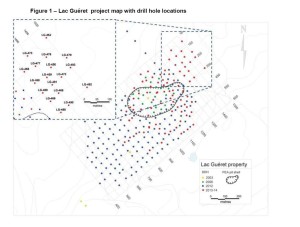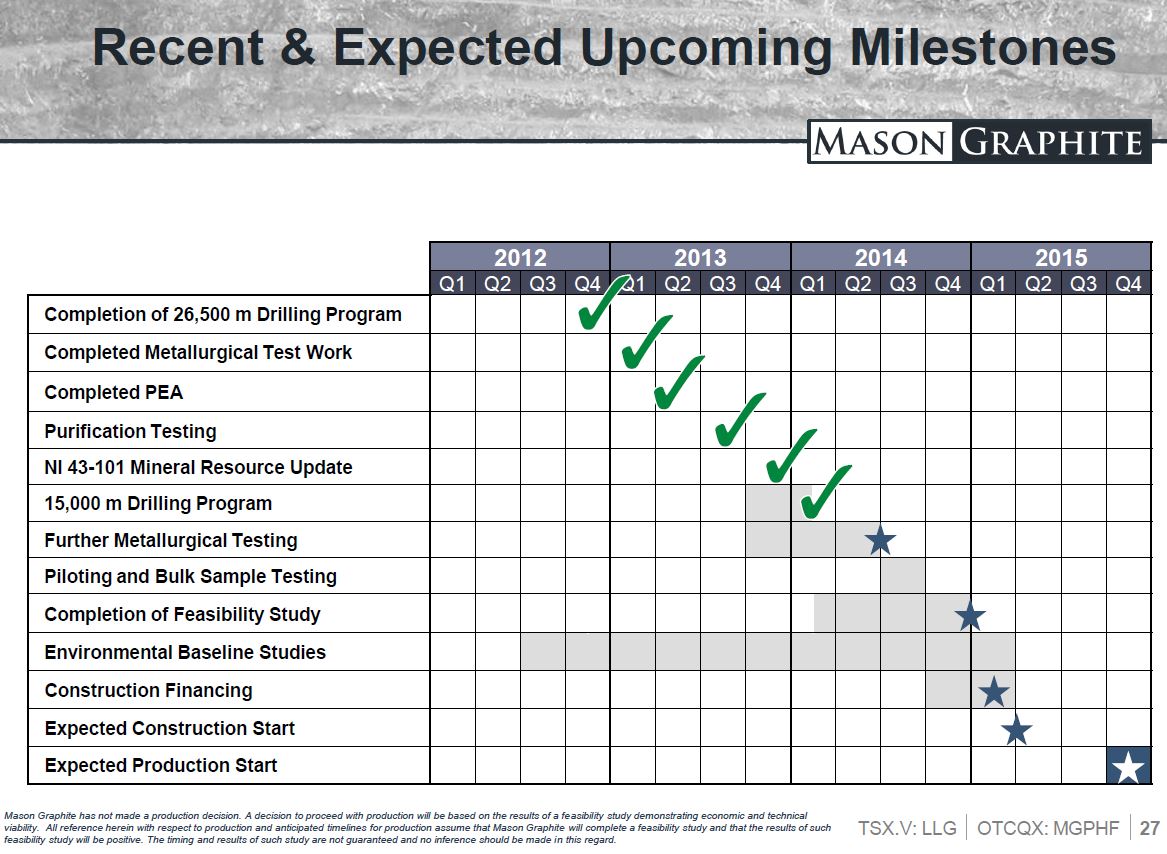After the markets closed today, Mason Graphite (LLG:TSXV), the company that is developing the Lac Gueret graphite project in Quebec announced the results of recent drilling and they are impressive.
In hole LG-491 the company intersected 98 metres of 29.8% carbon as graphite (Cg) including an interval of 56 metres of 36.2% Cg with mineralization starting from surface.
The current resource model hosts a deposit with an average grade of 15.6% Cg and so this northeast extension, where mineralization starts from surface, represents an area that could prove to be very impactful on the economics of the project going forward.
This new mineralization is essentially at the future pit wall of the mine and so it could be easily integrated in the early years in order to help provide a quick payback of invested capital.
"We are very encouraged with the results from the northeast extension. This exploration target is located at the edge of the defined mineral resource, and adjacent to the pit design from the preliminary economic assessment we completed in April, 2013. These results confirm mineralization near surface with excellent widths and mineral continuity beyond the current mineral resource boundary," said Benoit Gascon, President and CEO of Mason Graphite.
Shares have rebounded from lows in late May and are up approximately 30% since the start of June and closed today at $0.78 giving the company a market capitalization of $67 million.
The 2013-2014 drill program consisted of 97 drill holes totalling 15,108 metres.
Mason's exploration team drilled 18 holes or 2,085 metres exploring for extensions to the northeast of the resource model and another 11 holes or 1,700 metres on other wildcat exploration targets. The bulk (68 holes or 11,323 metres) of the 2013-2014 drilling focused on exploring the continuity of mineralization within the defined resource model.
These most recent holes represent the northeast extension of the high-grade GC Zone. This zone is one of two zones the company has defined.
The GC Zone has been identified as having a 1.2km strike length and is up to 240 metres wide.
The second zone, GR, 1km in strike and swells to 110 metres wide in places.
The company will incorporate the results of this drill program in an updated mineral resource calculation that will be the basis of a feasibility study which is expected to be complete before year-end.
A 100-ton bulk sample was collected from the deposit in early July for the upcoming pilot plant test program, which is scheduled to commence this fall.
Last week the company announced that they signed a co-operation agreement with the Pessamit First Nations for the preconstruction phase of the Lac Gueret project. The project is located about 300km north of Baie-Comeau, part of the Nitassinan (traditional lands) of the Pessamit First Nation.
Once in production, the operation is expected to create approximately 80 direct jobs for both aboriginal and non-aboriginal inhabitants of the area.
"The Lac Gueret project will be a world-class operation," said Mr. Gascon in the release last week. "Not only is this very high-quality, crystalline, large-flake graphite, a highly sought-after product on international markets, but the average grade of the ore, as set out in the company's preliminary economic assessment, is approximately 27.4 per cent graphitic carbon, and its purity is at the top of the grading scale. We expect prices to average an estimated $1,525 per ton, resulting in potential sales of $76.2-million per year. That's what I call a promising future!"























